2024學年「伊斯蘭的花園:哲思與設計」短期課程回顧
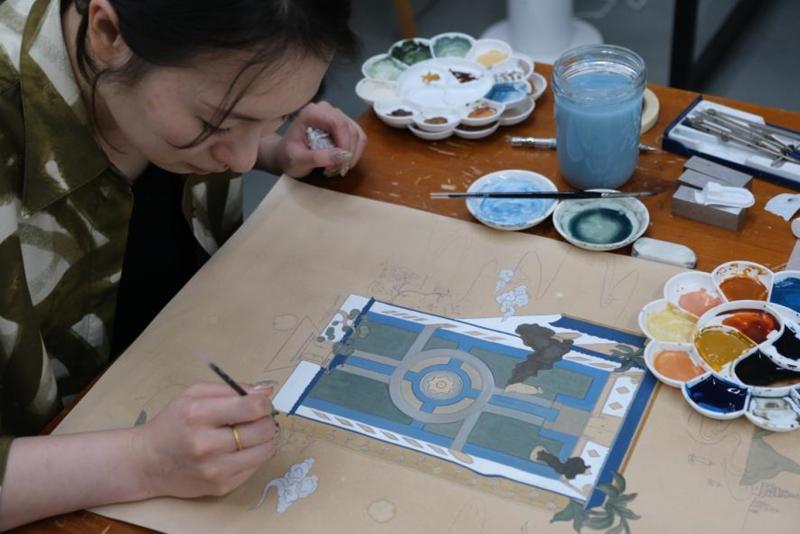
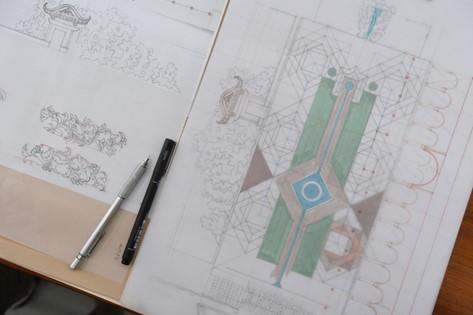
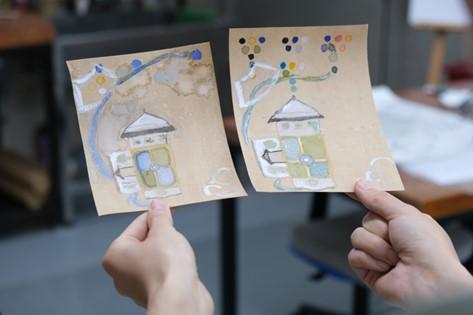
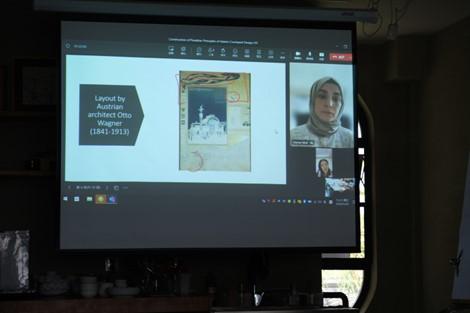
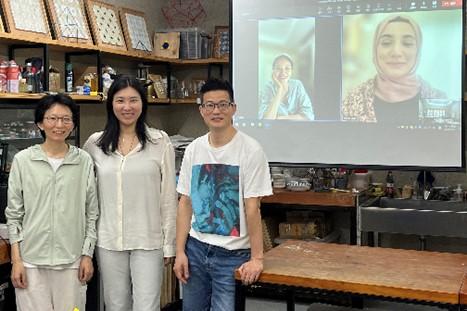
5月20日– 5月31日,在Zeynep Iqbal導師的指導下,英國國王基金會傳統藝術學院中國中心(KFSTA)的學員們完成了為期兩週的傳統藝術課程「伊斯蘭的花園:哲思與設計」的學習。
The module “Courtyard Design in the Islamic Tradition” was delivered by tutor Zeynep Iqbal from the King's Foundation School of Traditional Arts at Yuan Centre on 20-31 May.
在第一週的課程中,Zeynep導師集中深入講授了伊斯蘭花園設計哲思及設計的過程,並帶領學生了解伊斯蘭花園藝術的美學價值。
During the first week, Zeynep introduced the ideological principles and design process of Islamic courtyard design, and demonstrated its aesthetic value.
Zeynep導師在課上為大家展示了庭院設計的案例,並帶領學員共同研究來自伊斯蘭世界和絲綢之路沿線國家的不同時期的院落及花園的形態。
The tutor showcased a sample courtyard project and shared her study on various courtyards and gardens from the Islamic lands and countries along the Silk Road from different eras.
通過多感官體驗(視覺、聽覺、嗅覺、觸覺),學員們逐漸領悟了伊斯蘭花園的多樣性、地域性、建築性和可持續性。
Through the multisensory experience (sight, hear, smell, touch), students gradually comprehended the diversity, locality, architectural elements, and sustainability of Islamic courtyards.
第二週,學員開始跟隨導師練習繪製伊斯蘭花園中水和陰影等經典元素,並結合蘇州本地的建築和植物元素,學習構建和搭配院落花園的空間。
During the second week, students learned how to constructing their own garden based on the key elements of water and shades in Islamic courtyard design as well as other architectural elements and local elements from Suzhou.
在設計這些充滿活力的建築空間及裝飾元素的過程中,幾何原理與比例關係也得到了充分應用。
Geometric order and proportional relationships are applied in the design of these dynamic architectural spaces and ornamental elements.
下半周,學生們將自己的設計轉印到水彩畫紙上,並進行進一步的色彩繪畫以在最終的效果呈現中反映他們的設計理念。
In the second half of the week, students transferred their designs onto watercolour paper and further developed their paintings in colour to reflect their design ideas for the final presentation.
對學員來說,這是他們第一次接觸這一伊斯蘭文化藝術並動手設計伊斯蘭庭院。對於更熟悉中國園林的學員們來說,本次課程體驗也使他們對園林藝術有了更豐富的理解。
For most students, this is their first time to have a close contact with Islamic art and culture as well as a hands-on project of an Islamic courtyard design. To those who are more familiar with classical Chinese gardens, their experience throughout the workshop has brought them a richer understanding of garden art from both roots.
